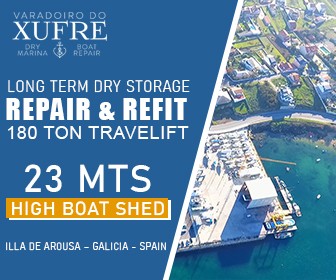Atlantic Iberian Peninsula [“Orca Alley”]: Passage Planning Part 2
Over the first few months of 2024 in preparation for transit season, Noonsite is publishing guidelines in collaboration with the Cruising Association (CA) as to how you can best-prepare for a passage around the Atlantic Iberian Peninsula and what you can do to help those following in your wake. Part 2 focuses on how best to prepare prior to departure and FAQs. There are links to the other articles in the series at the top of this report.
Published 8 months ago, updated 6 months ago
Passage Planning for the Atlantic Iberian Peninsula
Part 2. FAQs (in collaboration with the CA)
Read Part 1. Passage Planning HERE.
Read Part 3. What to do at sea should you encounter orcas HERE.
Read Part 4. Analysis of orca locations HERE.
How likely is it that I will encounter Orcas?
The majority of boats start sailing south from Northern Europe in late April/May. The CA, in collaboration with Grupo de Trabajo Orca Atlántica [GTOA], have been collecting data from yachts transiting this coast since June 2022. Hot spots during April and May seem to be west of Gibraltar, across the whole Strait, where orca wait for the tuna (which they feed on) to leave the Mediterranean sea after spawning.
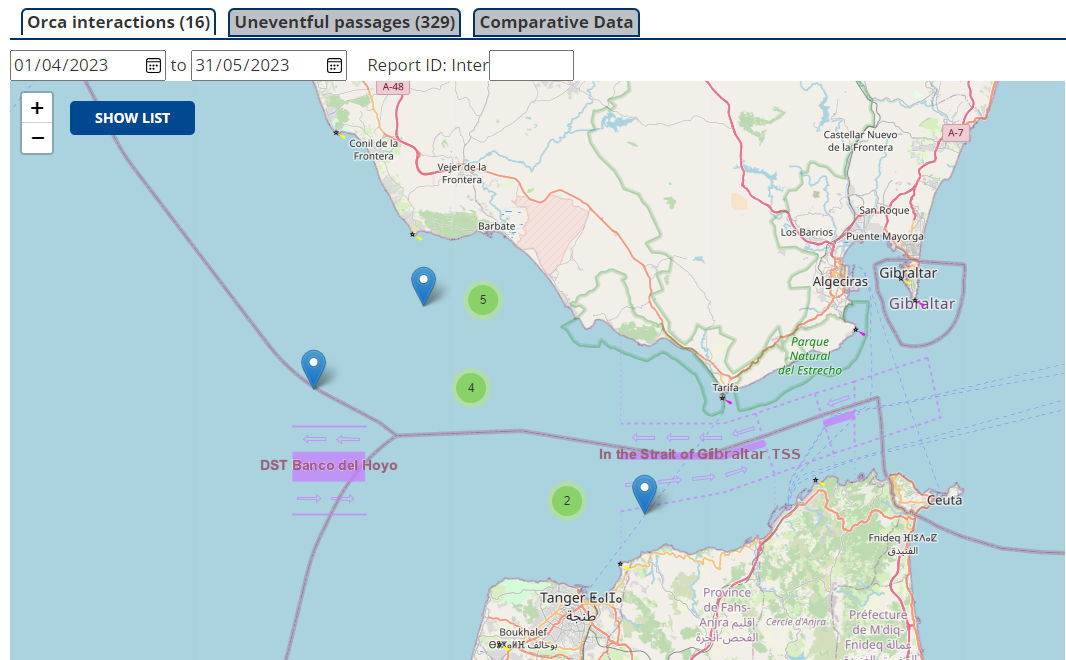

The tuna then migrate west along the Spanish coast and north up the Portuguese coast towards the North West Spanish Coast before dispersing in the Bay of Biscay later in the season. Generally early in the season it is fairly safe down to the Algarve, then there is a challenging period until the orca move west and north, when it is fairly safe between the Algarve and Gibraltar. It seems the tuna prefer to avoid shallow water while following the line of the coast and the orca follow them.
Review the historical data on orca movements. GTOA’s monthly interaction maps go back to 2021 and give a good idea of orca trends.
The CA does not currently have enough reports to make definitive conclusions from comparing the interaction and uneventful passage reports. However there are a number of patterns worth noting including depth/distance offshore, antifoul colour, use of an autopilot and daylight conditions. See this page on the CA website for more details and review the CA’s Orca Interaction and Uneventful Passage Report Results, which show comparative data.
Resources:
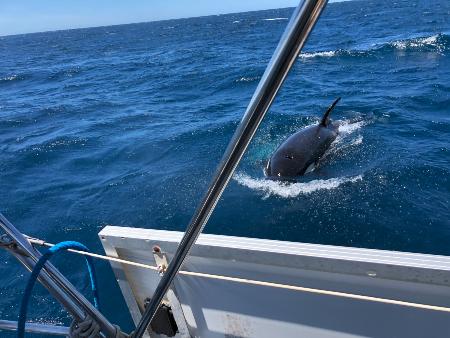

How can I avoid an encounter with orcas?
It is important when passage planning to keep up to date with current orca locations.
There are only 15 individuals involved in this behaviour, and there is now a lot of information on where they are, or are likely to be.
GTOA has been collecting data on interactions for several years and publishes a regularly updated traffic light map showing the probability of encountering orcas in different locations along the West and South Atlantic coasts of the Iberian Peninsula. As detailed on the GTOA website, the traffic light map is considered up to date for a 24-hour period.
GTOA also publishes monthly interaction maps, which include all CA interaction reports plus information obtained from social media and other sources.
There are now a number of reporting Apps where crews can report sightings in real time. GTOA orcas and Orcinus were popular last season.
GT Orcas app supports the identification of the most active orcas and the GTOA monthly interaction maps provide information on sightings and interactions, with maps showing areas where orcas are most active via a simple reporting platform.
Orcinus app gives the opportunity to see in real time any reported sightings and interactions.
In addition there are a number of social media sites that are used to share information such as Orca Attack Reports. This is the largest group with over 52,000 members.
From analysis of all this information it should be possible to voyage in much of the area fairly safely for at least part of the season.
Resources:
- GTOA Risk Map
- GTOA Monthly Interaction Maps
- GT Orcas App Play Store
- GT Orcas App Apple Store
- Orcinus App Play Store
- Orcinus App Apple Store
- Orca Attack Reports
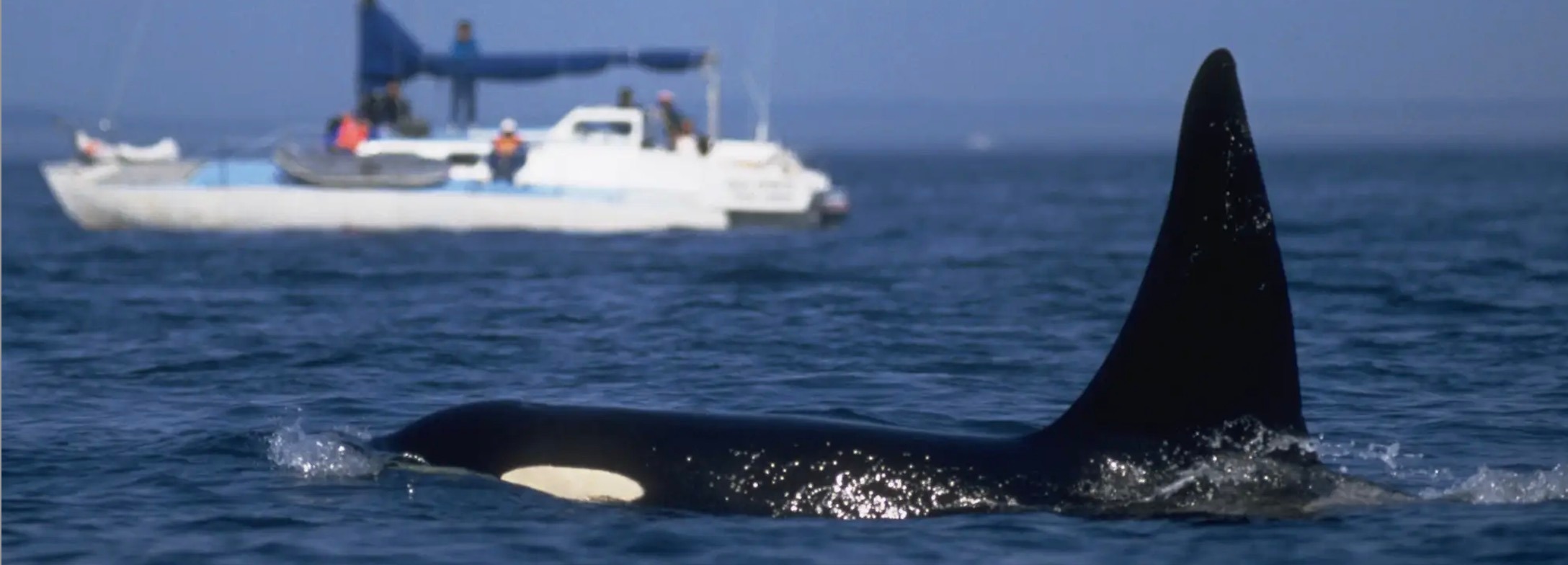

What precautions should I take to avoid orcas?
- Read the CA’s Safety Protocol.
- Make sure you know where the orcas are, or are likely to be (see resources above).
- All crew should wear lifejackets.
- Know emergency contact numbers: VHF Channel 16, Mobile Phone 112, Coastguard France 196, Spain 900 202 202, Portugal 112.
- Post a good look out at all times – there are dangers of orcas approaching and colliding with the rudder while holding onto the wheel.
- If voyaging in an area where the orca are currently located, travel close to the shore in less than 20 meters of water, or a long way off shore.
- If close inshore beware of navigation hazards such as fishing pots and rocks.
- Consider travelling in daytime rather than at night, as both navigation and any avoiding action is easier in daylight.
- A loud noise has driven orca off in the past, so consider carrying a means of making a loud sudden noise. Banging metal bars or using a foghorn in the hull seemed to have worked.
- Sand poured around the rudder has protected boats from damage in the past because it temporarily confuses the image for the orca and is harmless.
- Read the CA’s Interaction Comments Library, extracted from the full interaction reports, categorising the different actions and measures that skippers have reported when attempting to deter or end an interaction. The library provides an easily accessible way to research the effectiveness of skipper actions based on evidence from first-hand accounts.
To prepare yourself and your crew, gain knowledge in advance and plan for all eventualities. Use the CA’s extensive free resources to stay informed as well as report to this incredibly important project post-passage to help keep both sailors and orcas safe.
Resources:
Discover, learn, share and help others
https://www.theca.org.uk/orcas
Next month we look at what to do at sea should you encounter orcas.
Useful Orca Links:
- For a short history of orca encounters around the Iberian peninsula see the Noonsite orca page.
- Orca Encounters on boats: What you need to know (Practical Boat Owner January 2024)
- Useful recording of CA webinar Orca and Yachts: Fact, Fiction and Fear (May 2023)
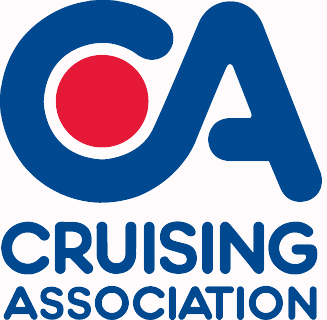

The Cruising Association [CA] has been collecting data since June 2022, in collaboration with Grupo de Trabajo Orca Atlántica [GTOA], both from skippers that have encountered orcas and those that have had an incident-free (uneventful) passage along this coast. This valuable data has enabled a huge library of reports and guidance to be established for yachts, which continues to grow as more passage reports are received. If a passage through “orca alley” is in your plans this year, be sure to use the CA’s free resources to stay informed as well as contribute to this incredibly important project post-passage to help keep both sailors and orcas safe.
Related to following destinations: A Guarda, Aber-wrac'h, Albufeira, Algeciras, Alvor, Arcachon, Atlantic Coast (France), Atlantic Coast (Portugal), Audierne, Aveiro, Aviles, Baleeira (Sagres), Barbate, Bayonne, Benodet, Bilbao, Brest, Burela, Cadiz, Camaret-sur-mer, Capbreton, Cascais, Chipiona, Concarneau, Corcubion, Douarnenez, Ensenada de Santa Marta, Figueira da Foz, Finisterre, France, Gibraltar, Gibraltar Port, Gijon, Gironde Estuary & Bordeaux, Guetaria, Hendaye-Behobie, Hondarribia, Huelva, Isla Canela, Isla Cristina, La Baule(Pornichet), La Coruna, La Linea, La Rochelle, La Trinite-sur-Mer, Lagos, Leixoes (nr Porto/Oporto), Les Sables d'Olonne, Lisbon, Loctudy, Lorient, Malaga, Mazagon, Mutriku, Nantes, Nazare, North West Spain, Oeiras, Pasaia, Pauillac-Trompeloup, Peniche, Piriac-sur-mer, Port Crouesty, Port Joinville (L’Ile d’Yeu), Port-La-Foret, Portimao, Porto (Oporto), Portugal, Povoa de Varzim, Puerto Banus & Marbella, Quibiberon Bay, Quimper, Ria de Arousa, Ria de Camarinas, Ria De Cedeira, Ria de Muros, Ria de Pontevedra, Ria De Ribadeo, Ria de Vigo and Baiona, Ria De Viveiro, Ria Formosa (Faro & Olhao), River Guandiana - Ayamonte, River Guandiana - Sanlucar, Rochefort, Rota (Spain), Royan & Port Medoc, Saint-Jean-de-Luz, San Sebastian, Santander, Sesimbra, Setubal, Sevilla, Sines, South Coast (Algarve), South West Coast (Spain), Spain, St Denis d’Oleron, St Nazaire, Tarifa, Tavira, Troia, Vannes, Viana do Castelo, Vila Real de Santo Antonio, Vilaine River and Roche Bernard, Vilamoura
Related to the following Cruising Resources: Atlantic Ocean East, Cruising Information, Navigation, Orcas and Yachts, Planning and Preparation, Routing






